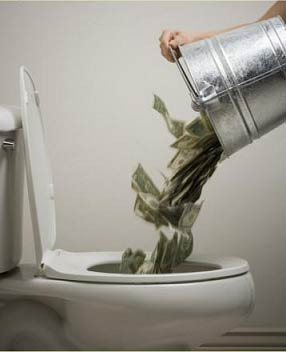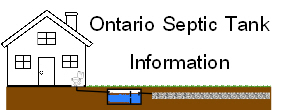Are they good or bad? And if they are so bad, why are they still selling?
The biggest reason the industry dislikes additives is because septic system owners assume that if they put something down the toilet they will never have to worry about their system. It may not be the actual additive that is the problem, but the “I don’t have to do anything else” mentality. Getting your tank checked on a regular basis is a valuable tool to reduce the risk of failure and not a single product can make sure your tank is working properly.
So if you are one of those people who flush and forget, then hopefully this article will encourage you to at least have your tank checked to make sure that the additive you are using, is actually working!

When determining if an additive is good or bad, you have to look at the main ingredients and understand how that ingredient interacts with your septic system.
The four basic categories that products fall under are:
1. Chemical (Alkaline Compounds, Buffers, Solvents and Surfactants):
Calcium– Although there are a lot of calcium variations, the main feature is that it raises the pH of the sewage to allow the bacteria to function properly. The septic tank naturally decreases the pH as a result of anaerobic bacterial activity, so if calcium is added, it balances the pH so the bacteria can perform better.
Unfortunately, calcium can actually cause more harm then good. If too much calcium is added it will raise the pH too high and not only kill beneficial bacteria but act as a floculant and cause solids to remain suspended and get flushed out to the absorption bed. Calcium (or lime) additives are based on the assumption that good bacteria are already present and working.
Sodium Bicarbonate– Another pH buffering chemical that is better then calcium because it only adds alkalinity instead of additional pH. This is better because it reduces the risk of overshooting the pH as is possible with calcium. The presence of beneficial bacteria still needs to exist.
Surfactants / Floculants– Basically they reduce surface tension between molecules. Soap is a common surfactant that joins fats, oils, grease (FOG’s) with water, allowing them to flow freely. Surfactants and floculants are actually very bad for a septic system because it allows the solids to go through the tank and into the septic bed without being pre-treated by the bacteria in the septic tank.
There are many more chemical additives that raise pH, liquefy solids, and reduce odors, but they all work (good or bad) on the assumption that bacteria and enzymes are present in the system.
2. Nutrients/Food (Protein, Minerals, Carbon, Meat, Grain):
Bacteria need protein and other nutrients just as much as we do. So these additives are somewhat beneficial and won’t cause adverse effects, but again, they are relying on the proper bacteria being present in the septic system.
3. Enzymes:
Our bodies naturally produce enzymes to break down the food we eat so our bodies can absorb the nutrients. Enzymes are also naturally found in raw foods such as meat, fruit, and vegetables. When enzymes become present in the septic system they help to break down complex molecules so bacteria can digest them better.
Yeast is a common additive which contains a lot of enzymes, although it lacks the necessary enzymes to assist with degradation of FOG’s or hair protein. Adding enzymes without the correct bacteria being present is like chopping up vegetables for a child who won’t eat them anyways. Adding too much yeast and enzymes can actually cause frothing of the tank contents which suspends the solids, sending them out to the absorption bed undigested. I have actually received a request for help after someone added a cup of yeast and it was bubbling out of the roof plumbing vent.
4. Bacterial:
A lot of industry professionals insist that the correct bacteria are already present in the septic system as a result of the human body digestive secretions. Yes, there are bacteria present that will decompose waste; however we only produce bacteria that are limited to functioning properly at body temperature and require a balanced pH. They also can’t decompose highly complex organics such as fats, oils, greases, etc.
Adding specialized bacteria is helpful to the system because specialized bacteria can handle greater pH changes and temperature fluctuations. You get what you pay for though. Try to find a bacteria product that advertises it contains actual bacteria strains as the main ingredient. If they advertise “enhances” and/or “promotes” bacteria growth then it is simply a pH adjuster or nutrient mixture.
Another industry oversight has to do with the fact that when residents are using high strength medication such as chemo, anti-depressants, anti-biotics, etc, then the bacteria simply can not survive the digestive tract. To add to the problem, all the anti-bacterial products that are used in the household, such as bleach, detergents, hand soaps, and cleaners kill the bacteria once it reaches the tank. Adding more specialized bacteria can help replenish the septic tank if anti-bacterial products have been used.
Summary
– All septic additives are bad if the owner does not have the tank checked on a regular basis to make sure it is still working properly.
– Avoid bulky additives that only contain surfactants, calcium, yeast, or baking soda because they may be doing more harm then good.
– Add bacteria additives that advertise good quality bacteria as the main ingredient as opposed to “enhancers” and “promoters” of bacteria health.
Comparison of common septic tank additives found in Ontario stores, online, or from local pumpers are as follows: (in alphabetical order, not from best to worst)
Bio-Clean : bacteria, enymes, powder, proven in commercial settings.
Bio-Desolve : bacteria + carbon, liquid, proven in commercial settings.
CLR Septic treatment : bacteria, enzymes
Eco-Ethic : bacteria, enzymes, proven in commercial settings
GreenPig : bacteria, neutralizers, surfactants, buffers, and enzymes
Mr Green Enviroflush : nutrients, vitamins
Nature Clean : bacteria, enzymes
Rid-X : enzymes, some bacteria, glycerin
Sealand Biotablets : no website to validate info or for support
Septall : calcium (floculant)
Septo-Clean : Simply contains grain and yeast
Septo Green : no website to validate info or for support. Appears to be only calcium pellets with green dye.
Septonic : enzymes, yeast, calcium (floculant), sodium chloride, ammonium chloride, flour, activated sludge
SHAC : carbon only
